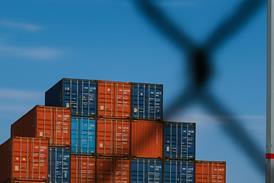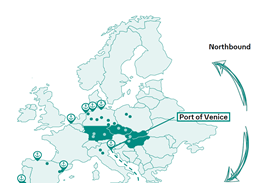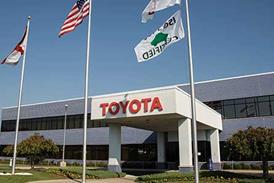The automotive logistics sector is characterised by a high degree of industry fragmentation. Put simply, that means there are an unusually large number of companies competing for a small share of the overall pie. This industry characteristic underpins many of the challenges the sector faces now and into the future.
Most companies operating within automotive logistics, with the exemption of the highly consolidated Class 1 railroads in North America, will attest to its highly fragmented nature and how that fundamentally shapes the industry dynamics.
This commercial reality is confirmed in our European Automotive Logistics Market Report 2024-2034, which reveals the leading ten inbound logistics companies have a combined share of just 27.8% of the overall market, illustrating that there is no clear dominant market leader. Similarly, within finished vehicle logistics, the leading ten providers have a combined share of just 38.4% of the overall market.
Likewise, in our North American Automotive Logistics Market Report 2024-2033, the top ten inbound logistics companies account for only 29.2% of the overall market and even the leading player has only has 6.5% of the market. In terms of finished vehicle logistics in North America, the leading ten logistics companies account for only 32.5% of the overall market and even the leading player only has 8.1% of the market.
So what are the effects of high industry fragmentation?
In essence, the large number of companies create a highly competitive landscape which exerts a strong downward pressure on prices. The net result is that industry margins are inevitably squeezed often into low single digits. Within that context, the tight cashflow makes it very difficult for automotive logistics operators to be financially resilient enough to cope with unforeseen events and disruptions. In the long term, it makes it very cost prohibitive to invest in much needed investment to modernise the industry around digitalisation and invest in the green transition towards zero-emission fleets.
Making those investments is very difficult without the economies of scale (and access to cheap capital) that a larger enterprise would have. In addition, companies are understandably reluctant to make capital intensive investments if their logistics contract could quickly be awarded to a competitor, which comes full circle to the issue of high industry fragmentation. This is why there is a trend for logistics companies to partner and collaborate on these investments in exchange for longer term contracts and agreements, as our recent whitepaper with CH Robinson on Partnerships in Automotive Logistics highlighted.

Of course, the generally low automotive logistics industry margins were turned on their head (for some) in the post-Covid recovery period of 2021/2022 because of exceptionally high container shipping and air fright rates. This was a bonanza for (some) of the automotive logistics industry players, particularly for the larger shipping companies such as Maersk, MSC and CMA-CGM, who went on acquisition sprees with the bumper profits.
However, now that freight rates have relatively normalised, and despite some notable deals, M&A deal activity has slowed in 2023 because of the following factors:
- Increasing interest rates have made it harder for buyers to secure capital.
- Declining freight rates have put downward pressure on the rates that shippers pay for logistics services.
- Geopolitical uncertainties have added to the challenges facing the logistics industry.
- Buyers and sellers have had difficulty agreeing on prices.
Recent automotive logistics company M&A activity 2023-2024
| Company | Acquisition |
|---|---|
|
CMA-CGM |
Bollore, Berge-Gefco 50:50 JV, Port Liberty Bayonne & Port Liberty New York |
|
Ryder |
Impact Fulfilment Services |
|
Geodis |
trans-o-flex, ITS, Southern Companies Transports Devoluy |
|
Jack Cooper |
|
|
J.B. Hunt |
BNSF Logistics |
|
DP World |
|
|
Kuehne + Nagel |
|
|
LKQ |
|
|
Nippon Express |
Tramo AS, Cargo-Partner |
|
Stobart Europe |
|
|
UPS |
MNX Global Logistics, Happy Returns |
|
Valsoft |
|
|
Acertus |
|
|
DFDS |
|
|
DP World |
Cargo Services Far East |
|
DSV |
|
|
Duvenbeck |
|
|
Mosolf Port Logistics and Services (MPLS) |
Transport Overseas Group (January 2025)
|
|
MSC |
|
|
Noatum acquires |
|
|
Proficient Auto Logistics |
Proficient went public to acquire five logistics firms and merged Proficient Auto Transport, Delta Automotive Services, Deluxe Auto Carriers, Sierra Mountain Group and Tribeca Automotive. Proficient’s IPO is highly speculative because it is unusual to fund acquisitions with public investment. If successful, the combined company will continue to serve customers from large OEMs, dealers and rental and leasing firms. |
|
Sennder Technologies |
CH Robinson’s European truck division from
|
|
UPS |
Estafeta |
|
Yusen Logistics |
However, M&A activity has picked up in 2024, most notably with DSV’s acquisition of DB Schenker, and is likely to increase for the following reasons:
M&A objectives
- Synergies allow cost reduction: The automotive industry is in a price war and cost reduction phase, and this is exerting pressures on all parts of the value chain, including automotive logistics. Being a larger logistics operator allows more synergies and more buying power when negotiating costs eg. when purchasing new fleets.
- Becoming a global logistics player: Many logistics companies are seeking to increase regional presence and become global operators to help them become more efficient, more resilient and achieve the economies of scale that helps them respond to those cost-pressures. This was one of the objectives of DSV’s acquisition of DB Schenker.
- Developing end-to-end solutions: To increase market share, market presence and capture more of the value chain, some logistics companies are becoming more end to end solution providers. For example Maersk and DP World are openly pursuing a strategy to develop their business through acquisition across multiple transport modes, diversifying beyond ports and shipping.
- Negotiation power: Clearly the larger logistics operators have more negotiating power when it comes to logistic contracts, so the larger the enterprise, the more competitive they can be within a very price competitive industry sector.
- Financial resilience: Larger enterprises not only have the economies of scale, they also have the financial stability to be able to access credit lines to help them through inevitable crises. This was particularly evident through the Covid period.
- Acquisitions achieve strategic objectives quicker than organic growth: Strategic objectives are much more quickly and effectively met by buying regional penetration, expertise, fleets and skilled staff compared to developing them in-house through more organic growth.
Stay ahead in the rapidly evolving automotive logistics market with the North American Automotive Logistics Market Report 2025-2035. This comprehensive analysis offers valuable insights to help navigate current industry challenges, mitigate risks and capitalise on growth opportunities. Featuring in-depth market forecasts, key conclusions and actionable recommendations, the report equips decision-makers with the knowledge needed to optimise strategy and drive success amidst shifting market dynamics.
Unlock Competitive Advantage in Automotive Logistics: Download the Full Report Now








































No comments yet